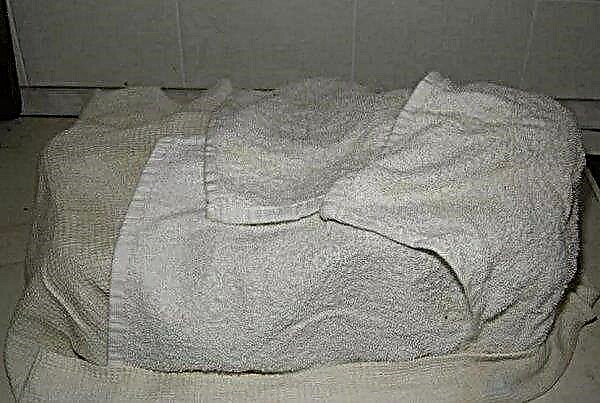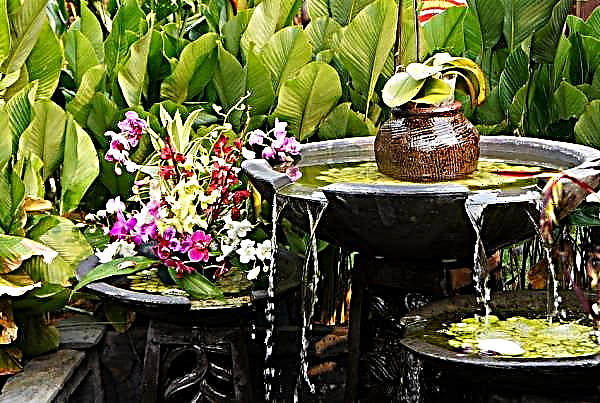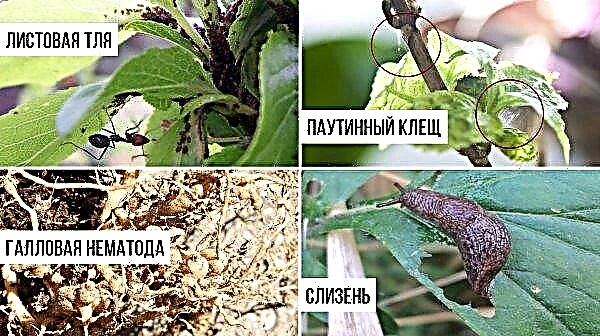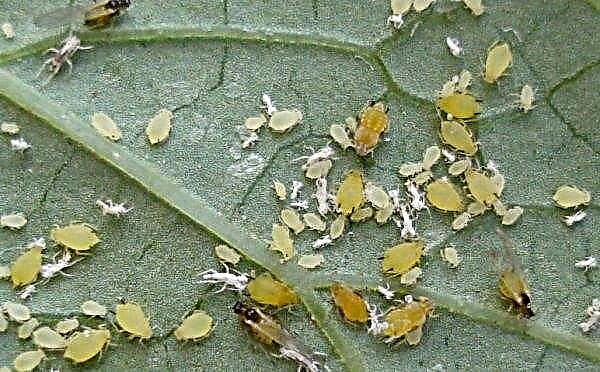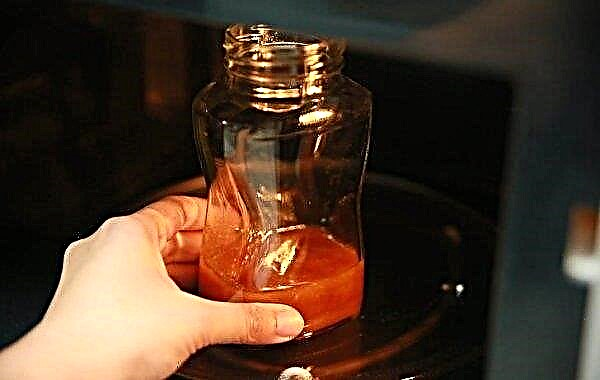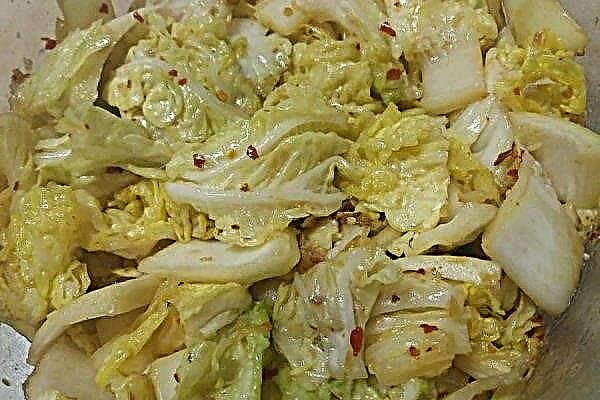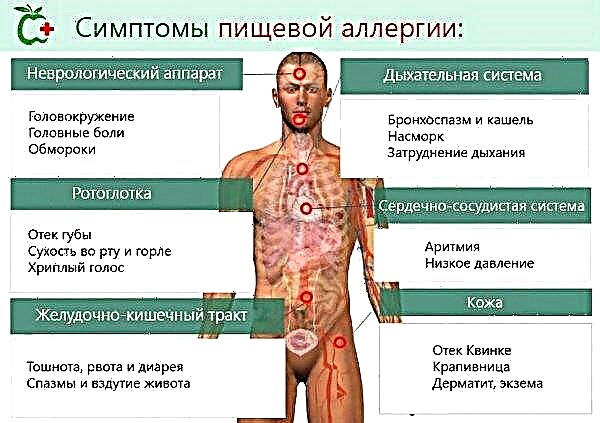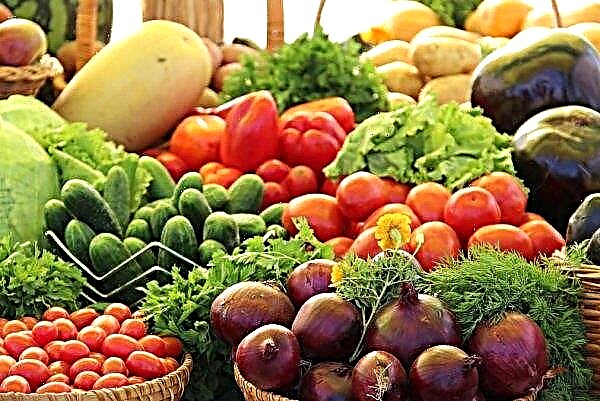Growing onions from seeds yourself is not easy, but interesting. The sowing process, as well as the features of further care are described in detail below.
What is black onion and how to get it
Onion seeds are called onion seeds, which have a black color, wrinkled structure and medium size (slightly larger than radish seeds). Little cherries are collected from onion inflorescences after their flowering. To protect the seeds from insects and prevent them from crumbling to the ground, a gauze protection is put on the selected heads. This method is often used for rare varieties, and ordinary onion umbrellas are cut off and left to ripen in a dry place for 2-3 weeks.
After harvesting, the seeds should be stored in a dry place at a temperature of +14 ... + 18 ° C.
Growing onions traditionally consists of two cycles:
- in the first year black seeds are sown, from which small bulbs grow (sowing);
- in the second season, sowing is planted on the beds, and in the fall they harvest a full-fledged large bulb.
The most popular of them are:
- Stuttgart Riesen;
- Stroganovsky;
- Belovezhsky;
- Hybrids Spirit F1 and Stardust F1.
Important! Varieties of multi-nested type are not suitable for planting for one year, the bulbs of which in this case can grow deformed.
Site selection and preparation
To grow this crop, you need a dry and maximally lit area. It is best to prepare the soil in the fall. After weeds are destroyed, humus and peat are added to the ground. Ready soil should be light so that chernushka can sprout more quickly.
For planting, you can use the place where solanaceous or bean plants, cabbage and cucumbers used to grow. It is not recommended to re-plant the onion in the same place. Optimal neighbors are carrots, calendula and dill, which scare away pests.
Seed preparation
Germination of nigella does not last long. In the second year, seeds can germinate already half as often and then not hatch at all. To check germination, there are two options.
First way:
- A month before planting, select 20 seeds.
- Put them on a wet cloth and cover.
- Leave on for 2 weeks, moisturizing the tissue from time to time.
- The selected seeds (20-30 pcs.) Wrap in a cloth and tie with a thread.
- Place the envelope in boiling water for 20–25 minutes.
- Expand the fabric and count the number of seeds hatching.
- The number of pecking specimens is multiplied by 100.
- Divide the result by the total number of seeds tested.
Important! Germination below 30% is considered critical and such material is not used.
To increase germination (by about 30%), you can use the following advice:
- Pour boiling water in a liter jar and cool, checking the temperature by lowering your finger in water for 10 seconds.
- Dilute in water ¼ tsp. boric acid in powder.
- Place the seeds in the solution and leave in the light until cool.
- Drain the solution through a fine sieve and place the seeds in a plastic bag. Inflate the bag with air and tie it, and then put it on the sunny windowsill.
- After a day, the seeds can be sown.
Before sowing, it is also recommended to sort the seeds by size, since the rate of germination will depend on it. To do this, the seeds are sifted through sieves with different mesh sizes. For preliminary germination, the seeds are placed in a bag made of linen and dipped in ash infusion (1 tbsp. Per 1 liter of water) for 4-12 hours. Then the blackberry is washed, spread in a damp cloth and left at a temperature of + 22 ° C. Germination will accelerate the emergence of seedlings, especially if the land on the beds is too dry.
For preliminary germination, the seeds are placed in a bag made of linen and dipped in ash infusion (1 tbsp. Per 1 liter of water) for 4-12 hours. Then the blackberry is washed, spread in a damp cloth and left at a temperature of + 22 ° C. Germination will accelerate the emergence of seedlings, especially if the land on the beds is too dry.
Features of planting onions
Nigella is sown at the very beginning of spring or before winter. The timing of when to plant depends on the preferences of the gardener and the climate zone, and the sowing technology is the same.
Did you know? Onion is the most common product in the world. It is grown in more than 175 countries, which exceeds the performance of wheat by more than 2 times.
In the spring
Spring planting of seeds to produce bulbs in one season is done as early as possible, at the first thaws (even in February). You can sow seeds for seedlings at the end of winter, which they then plant in open ground in April.
Fall
- The advantages of this landing are as follows:
- sowing before winter gives an earlier start and is best suited for growing black onion in one season;
- Significant time savings in the spring;
- the use of natural moisture from melt water.
Landing technology
The optimal width of the onion beds is 80–100 cm. On the bed, the seeds can be arranged in even rows or sow randomly. Even rows will allow you to get a larger sowing, and free sowing saves space. The rows are arranged with an interval of 20 cm. When planted, the number of seeds is calculated based on the proportion of 100 pieces per 1 m of furrow. To control the density, the color of the seeds can be changed by dusting with white chalk or flour.
Video: The subtleties of planting black onion
The sequence of actions is as follows:
- The bed is pre-moistened. Nigella is placed at a depth of not more than 1-2 cm. If the soil is very light and there is a strong wind, the depth can be increased to 3 cm.
- Topsoil needs to be slightly compacted.
- Immediately after sowing, watering is not recommended so that the chernushka does not go too deep. The bed is kept moist until seedlings appear.
Important! The formation of a dense crust on the ground after watering should not be allowed. In order for the sprouts to appear on the surface, the topsoil must remain loose.
Features of care after planting
Onion shoots at first require careful care, which consists of the following activities.
Thinning
Once the seeds have sprouted and formed the first true leaves, thinning is necessary. Plants are removed so that the spacing between them is at least 2 cm.
Further actions depend on the purpose of the landing:
- if the onions are grown in one season, then after 3 weeks the sprouts break again, leaving a distance of 6 cm;
- if the plant is grown to the north, the planting should be left thick to avoid excessive bulb growth, often in this case even the first thinning is not carried out.

Watering and feeding
Plantings are watered depending on the weather, carefully controlling the soil moisture in the first 2 months. Watering of onions is stopped at least 20 days before harvesting.
After each thinning, you can make fertilizer in the form of a solution of 1 part of manure in 5 parts of water. When growing sevka, it is better not to top-dress it to provide it with better storage.
Mulching
Mulching is used both when sowing in spring and before winter. You can use any organic matter, such as sawdust, peat or spruce spruce branches. Such a shelter will preserve soil moisture and prevent the formation of crusts, as well as protect delicate seedlings in case of freezing.
Pest and Disease Control
The most annoying onion pests include:
- Onion fly - Her identification mark will be white larvae in bulbs. The insect looks like an ordinary fly and appears in mid-May. To protect the plants, they cover them with nets, spray the seedlings with herbal infusions and sprinkle the aisle with mineral flour. A neighborhood with carrots is also recommended.

- Onion or tobacco thrips - damages green feathers, as well as bulbs during storage. Respect for crop rotation and insecticide treatment are saved from the pest.

- Onion tick - determined by the deformation of leaves with white plaque, the appearance of mold and wrinkling of the whole plant. For prevention, you need to control the quality of planting material, process the beds with nettle infusion. Mite control is carried out using various types of insecticides.

The most common diseases include fungal:
- Gray rot - usually falls on the plant during harvesting and already during storage can lead to the death of bulbs. The collected plants must be thoroughly dried to avoid problems.

- Rust - may appear by the end of summer. Forming yellowish spots on the leaves, the disease progresses in wet weather and freezes in the dry.

- Downy mildew - It can hit the whole landing. Elongated gray spots increase until the plant dies completely. Special soil and plant treatments will help fight the disease.
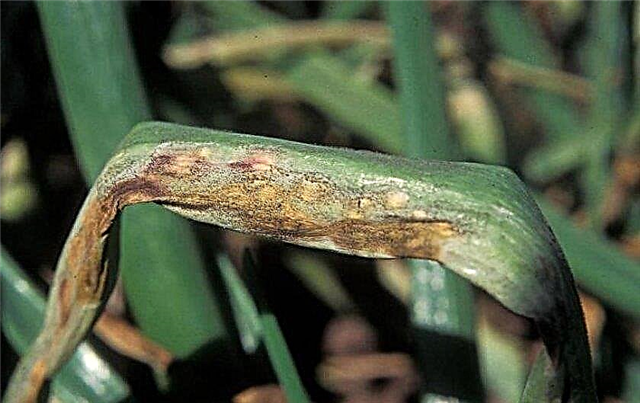
Harvesting and storage rules
A signal to start harvesting is lodging of the leaves, as well as the drying of the neck of the bulb. It is necessary to remove the onions before the onset of frost. First, they carry out drying on the beds or placing plants under a canopy. This process takes about 7 days, after which dry leaves should be removed and the bulbs removed in a dry place.
For long-term storage, specimens with the following characteristics are selected:
- the hardness of the whole bulb;
- dry apex and thin neck;
- dry roots and lack of seedlings;
- without damage and signs of decay.
The heads should be completely cleaned of earth. The optimal storage location is a dry basement or cellar where the temperature is maintained at around 0 ° C. At home, you need a box with ventilation holes or a grid for hanging. You can also use the traditional technique of braiding onions in braids. Humidity in the room should not exceed 65%.
Onions need to be sorted from time to time and remove the heads that have sprouted or began to rot. Storage of onion sets requires special conditions, which should ensure the viability of planting material in the spring. Use storage at low temperatures, warm storage or combined options.Did you know? Yellow onions are stored longer than white or red due to the fact that its scales are denser and contain more essential oils.
Additional recommendations
Using the basic principles outlined above, you can grow a good crop on a personal plot.
Experienced gardeners also advise:
- do not pick green feathers for food from onions planted "on a turnip";
- plant marigolds along the perimeter of the bed to protect them from pests;
- break out flower stalks so as not to waste the strength of the plant on flowering.










